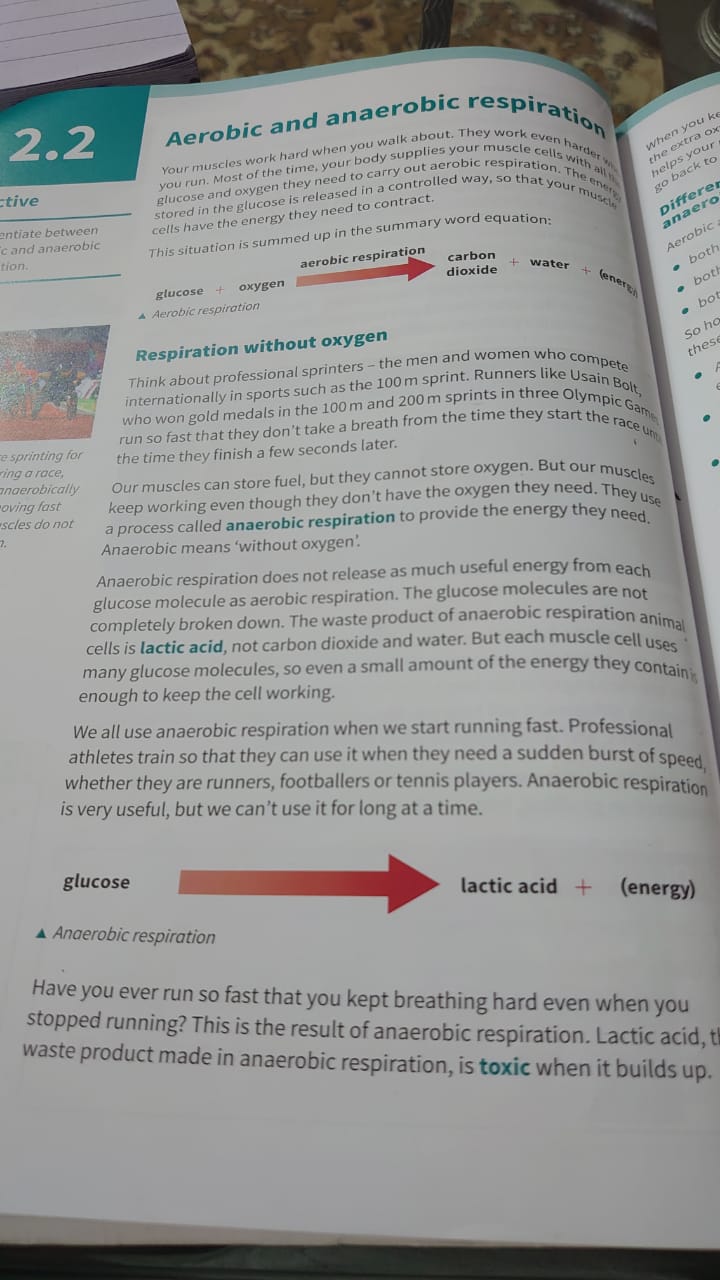What are the differences between aerobic and anaerobic respiration?

Understand the Problem
The question relates to the differences between aerobic and anaerobic respiration, detailing the processes and outcomes associated with each type, particularly focusing on the production of lactic acid during anaerobic respiration and its effects.
Answer
Aerobic: with oxygen, more energy, CO2 and water. Anaerobic: without oxygen, less energy, lactic acid.
Aerobic respiration occurs with oxygen, produces more energy, and has byproducts of carbon dioxide and water. Anaerobic respiration occurs without oxygen, produces less energy, and results in lactic acid.
Answer for screen readers
Aerobic respiration occurs with oxygen, produces more energy, and has byproducts of carbon dioxide and water. Anaerobic respiration occurs without oxygen, produces less energy, and results in lactic acid.
More Information
Aerobic respiration is more efficient, providing more ATP from glucose. Anaerobic respiration is crucial during high-intensity, short-duration exercises.
Tips
Commonly confused with the faster energy production of anaerobic respiration, which is less efficient in terms of energy yield.
Sources
- Aerobic and Anaerobic Respiration - Major Differences - BYJU'S - byjus.com
- 2.25: Anaerobic vs Aerobic Respiration - Biology LibreTexts - bio.libretexts.org
AI-generated content may contain errors. Please verify critical information